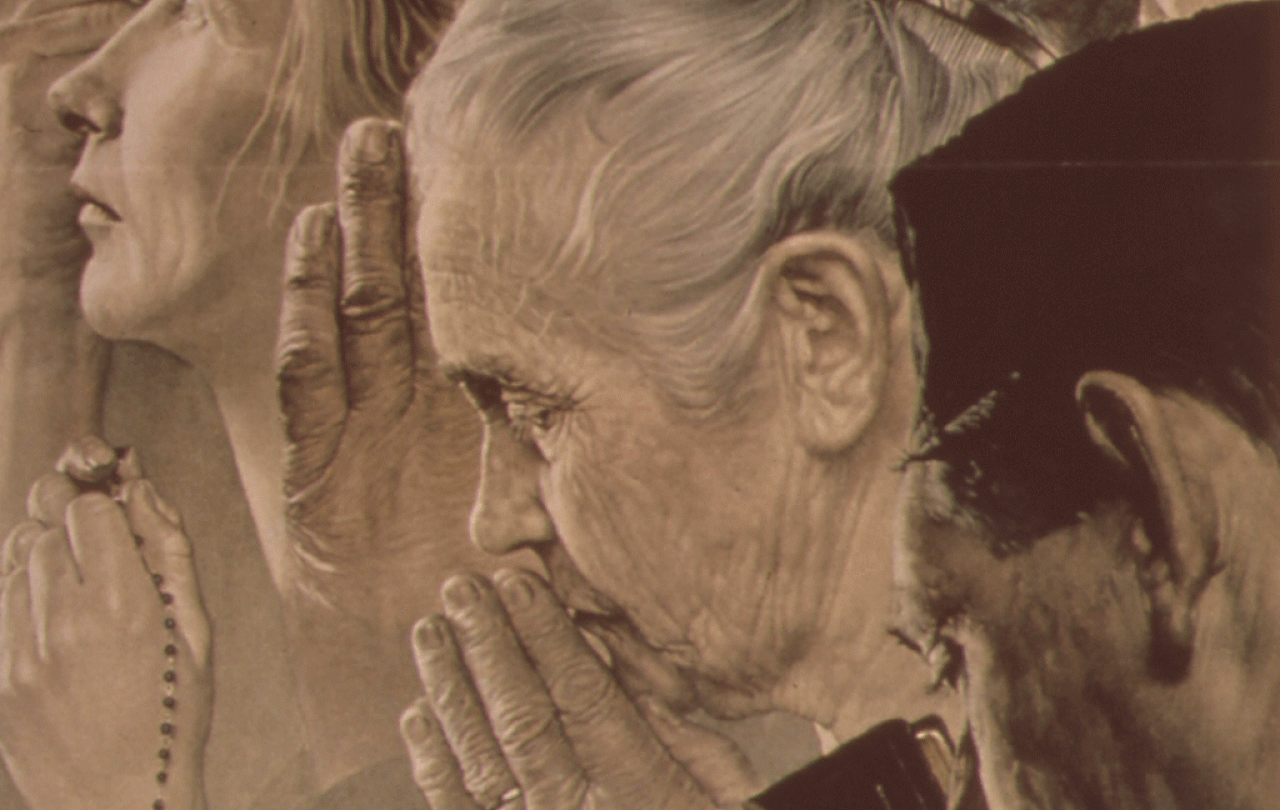
Religious liberty is a cornerstone of liberal democracy. The freedom of religious belief and practice is enshrined in human rights instruments, national constitutions, and legislation. Usually, those rights are uncontroversial. Only when someone claims a right to do something that threatens the rights of others – such as a right to decline to bake a cake for a same-sex wedding – do most observers take notice. Unfortunately, in controversial cases the values underlying both of the competing rights claims tend to get lost in political rhetoric. The arguments against the religious liberty claims may be obvious - concerns about security, or public health, equal treatment of LGBTQIA+ persons - but for many it is harder to see the value of allowing dissenters to peacefully practice their religion.
So, what is the point of religious liberty? Several justifications have deep historical and philosophical roots. Top of the list is reducing conflict: from the view of believers, God demands one thing, society another. Best to let believers have their way so long as they are peaceful about it. Concerns about political conflict were one of the key reasons for the rise of religious tolerance in the 17th, 18th, and 19th centuries.
This reason goes only so far, though—only far enough to prevent actual conflict. It does nothing to justify freedom for groups or individuals who pose no threat to political stability, perhaps because they are small, or because they are politically withdrawn. And focusing exclusively on conflict is intellectually unsatisfying; it considers only the effects of religious difference instead of digging into why people adhere to unpopular religious practices. For that, we need an insider's point of view. We need to see why believers have often supported religious liberty not only as a political expedient, but because they have believed religion required religious liberty for everyone.
Consider two Christian statements of rationale for religious liberty that have become canonical among western democracies. The first comes from John Locke:
“true and saving religion consists in the inward persuasion of the mind, without which nothing can be acceptable to God.”
Such “persuasion” must be free, and it must be sincere. Under this view, compelled religious belief is an oxymoron; it doesn’t work, and even if it did, it would do the believer no good--salvation requires voluntary belief. Therefore, says Locke, the “civil” jurisdiction and the “spiritual” jurisdiction are strictly separate, with the civil magistrate having no say over spiritual matters. This argument went a long way toward justifying the government’s toleration of dissenting assemblies, preaching, and worship. But toleration goes only so far. It does not include freedom from any legal duty that is rightly within the domain of the civil magistrate. For instance, a religious pacifist--Christian, Buddhist, or otherwise--who objects to mandatory military service is out of luck.
James Madison, the architect of the U.S. Bill of Rights, was more sympathetic to dissenters. When Virginia tried to make taxpayers pay tithes to their local churches, Madison pointed to the Virginia Declaration of Rights (1776):
“Religion, or the duty which we owe to our Creator, and the manner of discharging it, can be directed only by reason and conviction, not by force or violence.”
At first glance, this may seem to restate Locke’s position: true religion requires intellectual freedom. But it goes much further than Locke did. Madison defines religion as the duty one owes to God and “the manner of discharging it.” And, crucially, Madison jettisons Locke’s binary view of “civil” and “spiritual” jurisdiction. Only one jurisdiction matters for determining the scope of religious liberty: God’s. When we have a duty to God, the civil government should get out of the way. Under Madison’s view, religious liberty resolves inconsistent commands of rulers with overlapping jurisdictions in favor of those issued by the higher authority, God.
This view does not satisfy everyone (including some believers). In the first place, it relies on premises that many reject: the notions that there is a knowable God, that people owe duties to God, and that others should respect those (perceived) duties. In the second place, in religiously pluralistic societies, it often seems like each person claims different duties to different gods. Religious liberty facilitates religious diversity, which proliferates inconsistent claims of divine “duty," thereby diluting each of them. At the same time, it makes accommodating every claim more costly, because there are more of them, and they seek accommodations from a wider variety of laws.
To make matters worse, the divine duty rationale implies that religious liberty has no limits. The person who believes that God demands human sacrifice has as much a claim to religious liberty as the one who simply doesn’t want to be made to attend a church service. The rationale also rests on a notion that is increasingly difficult for those in secularized societies to view sympathetically: the idea that the Creator of the universe exacts obedience, and that society should honor the individual's perception of that duty, in exchange for... what, exactly?
A more thoroughly Christian view of religious liberty depends on grasping why believers want to obey God. Locke’s answer was straightforward: fear of eternal damnation. What ought to motivate religious tolerance, Locke insists, are differences about what constitutes “true and saving religion.” Here, Locke was understandably a creature of his times, when western Europe and North America were divided by doctrinal disputes about Christian salvation. Although the promise of eternal life through faith in Christ is the core of Christian doctrine, Scripture surely teaches that those who have already acknowledged Christ as their Savior should obey God not out of fear of damnation, but out of love. Jesus said the greatest commandments were these: “Love the Lord your God with all your heart and with all your soul and with all your mind and with all your strength” and “Love your neighbor as yourself.” Whatever duties we owe to God and others, from the most sublime form of corporate worship to the most mundane task of changing a diaper, flow from love. Love is the framework, the backdrop, the engine for Christian duty.
Where does such love come from? For Jews and Christians alike, such love is a proper response to God’s love for all of creation, and especially for humankind. Consider the evocative imagery of the ancient songwriter/poet known as the Psalmist:
“How precious is your steadfast love, O God! The children of mankind take refuge in the shadow of your wings. They feast on the abundance of your house, and you give them drink from the river of your delights. For with you is the fountain of life; in your light do we see light.”
For Christians, God’s love is shown most thoroughly in the teaching, life, death, and resurrection of his son, Jesus Christ. As the Apostle John wrote,
“By this we know love, that he laid down his life for us, and we ought to lay down our lives for the brothers.”
All too often non-believers seem to appreciate the core of Christian ethics better than many self-proclaimed believers: Christian duty ought to be not merely a private act of personal piety, but an active, self-giving, others-oriented love that mirrors the gentleness, kindness, and sacrifice of Christ.
It turns out that love, actually, is the root of the Christian duty that can sometimes generate conflicts with civil law. The freedom to love God and others according to one's best lights is the most thoroughly Christian basis for religious liberty. "According to one's best lights" is an important qualification. Although Christians agree on the requirements of love in many cases, they have from the beginning disputed whether some conduct is consistent with love. For instance, in the first century, they debated whether it was okay to eat food that had been sacrificed to the idols representing Roman deities. Some thought yes, some no. The Apostle Paul taught those who had no qualms with eating such meat to be understanding of those who did. Christians were to tolerate those with different interpretations of the requirement of love--at least as to matters that were inessential to the gospel.
What difference might love make for religious liberty? Most importantly, it might render claims for religious liberty more legible to those of any (or no) religion who disagree with the claim's morality. Not everyone has experienced fears about eternal salvation, but everyone has experienced a moral duty arising from affection, whether for a favorite sporting club, a family member, or country. Believers regard God as the source of all these good things, and many others besides, so God alone deserves our highest adoration. We may not be able to relate to a God who issues (seemingly) severe commands, but we ought to be able to relate to one who asks for, and merits, our love.
If love is the best motivation for observing a higher duty, we ought to think twice before we condemn those who say their religion will not allow them to follow the law. We ought to presume they have the best of motivations. To be sure, not every one who claims a religious exemption is motivated by love—no one is perfect, and some religiously-motivated conduct (whether in the name of Christianity or another religion) is decidedly unloving. Moreover, believers sometimes disagree about what love requires. In my own country (the U.S.), some religious claimants assert a religious duty to avoid funding contraceptive insurance on the ground that it facilitates abortions, while others claim a religious duty to facilitate an abortion. Those claims are morally inconsistent. If we assume that religious claimants in principle might be motivated by affection for what they take to be the divine, we ought to respect the dilemma that claimants find themselves in--even when the law does not, and should not, exempt their conduct.
Religious love is especially deserving of our respect and, when possible, accommodation. We should affirm our neighbors' attempts to follow the demands of divine love, even when we disagree with their understanding of those demands. And we should respect them even when that understanding cannot be squared with the needs of society in any given case. Love should not always be a trump card--no more than divine fear should be a trump card. Some religious freedom claims will not, and should not, win the day. There is no avoiding drawing lines according to law and public conscience. But love for God offers a richer, and perhaps a more attractive, justification for religious liberty in the first place.





